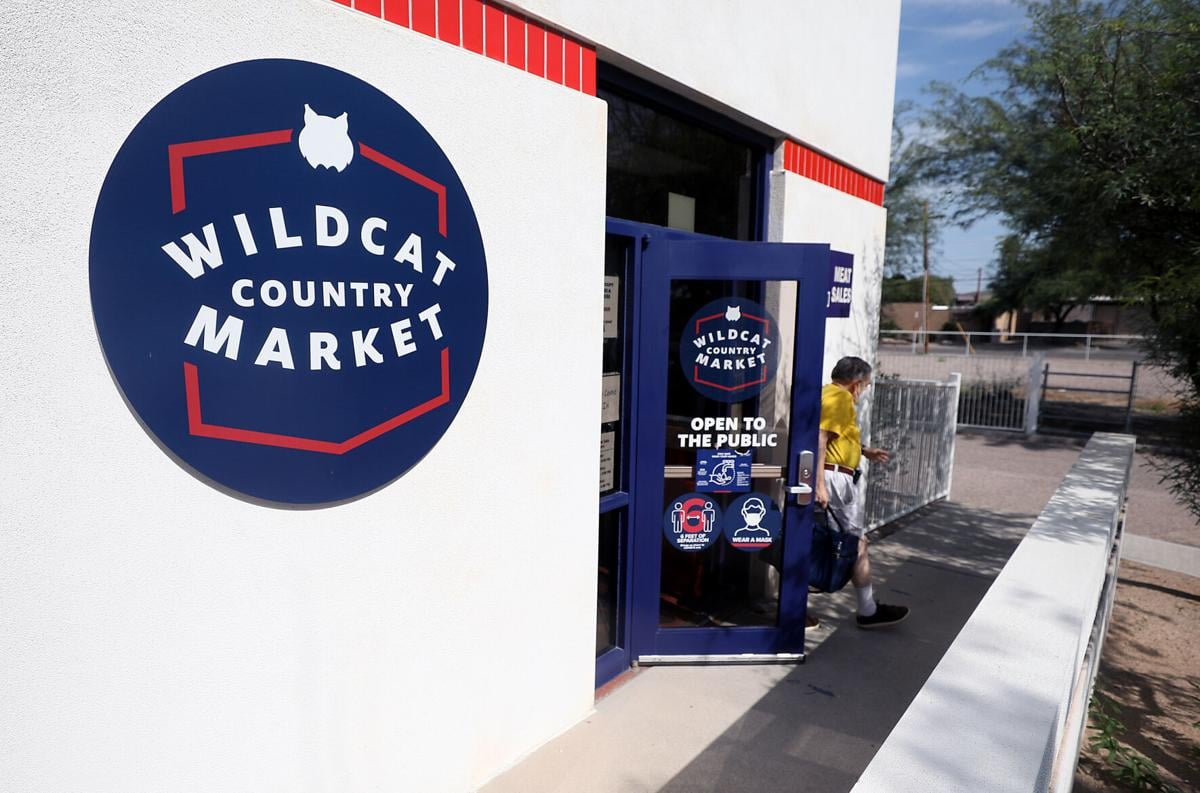You probably don’t know about the food products sold by the University of Arizona out of their Campus Farms. They’re not allowed to tell you about them.
While savvy carnivores can find their Wildcat Country Market through the UA's website, the college’s bylaws prevent competition with for-profit businesses — meaning advertising is verboten.
Yet, there it is: a nondescript building across the street from the Trader Joe’s on Limberlost Drive and Campbell Avenue at 4181 N. Campbell Ave. If you spend any time on the north side, you’ve definitely driven by it. The Wildcat Country Market is the public-facing component of a vibrant agricultural program at the UA.
“The whole idea behind the store is to sell meat that came from animals that were used for teaching,” said Dr. Samuel Garcia, an associate professor of practice and manager of the Food and Safety Labs at the UA. “It’s a byproduct of education. But that byproduct of education turns out to be great meat.”

Dr. Samuel Garcia is a professor and the manager of the Food Product and Safety Laboratory at the University of Arizona.
Students help raise pigs, cattle, goats and lambs. Students feed the livestock both grain and grass on the college ranch. When the time comes, students learn how to “harvest” the meat — a preferred euphemism for what we know as slaughter. At the end of those animals’ lives, students are involved in making the cuts — sausages like bratwurst and chorizo, jerky, and even pet food.
“The point is to use the animal all the way through, for teaching,” said Garcia.
While they don’t have the necessary equipment to properly clean the intestines or tan the hides, the offal and the skin are the only parts of an animal that go to waste. Marrow bones sell out, while less-popular organ meats are used in the raw, chunky dog food.
The state of Arizona only has four USDA certified "harvesting floors" (slaughterhouses). The floor at the university is by far the smallest, and most local. In addition to serving as an educational facility, the program works with small and hobbyist ranchers to harvest their livestock cleanly and humanely. Their sanitization processes are so intricate and comprehensive that they hardly needed to make changes with COVID protocols.
Picturing city farmers with backyard coops, I asked if they ever get asked to slaughter chickens. “A chicken is really easy to do at home,” Garcia said, gently correcting my vision. ”You can put him in an ice bath or a cooler. Not a lot of people have the space to cool the beef down and harvest it safely.”

Gary Robinson looks through shelves of meat products stocked at the Wildcat Country Market.
Garcia’s operation is not without controversy. Once or twice a month, animal rights activists come to the facility to protest the killing of animals there. “Ironically, because we are not allowed to advertise, when those protests get reported in the news, we get an influx of new customers,” said Garcia.
A number of industrial-scale meat producers have been cited for mistreating their workers and contributing to climate change. Meanwhile, the UA's program is intrinsically small, local and staffed by students.
Still, Garcia does not take animal death lightly. He’s a teacher foremost, whose favorite part of the job is the lightbulb moment when he can help a student break through on a tricky topic.
“Once students see how we make sure the animal doesn’t suffer [or, have a painful death], they’re pretty okay with the process,” he said, of harvesting. “If a student says, you know what, I don’t want to go in there, I don’t force them to watch.”
He explains that some veterinary students have a hard time. They want to help save animals, not kill them. “I try to explain, hey, there are times that you will put an animal down, and it’s better if you know firsthand that you know what happens in a plant like ours,” said Garcia. “I try to tell them to have an open mind.”

Emily Hansen, a student worker, opens the door for a customer.
A few generations back, most students and even casual grocery shoppers were much closer to farms. We were closer to the life cycles of livestock and agriculture. When our ancestors ate meat, they had a much better understanding of the work and death that was required in the process.
These days, those who choose to eat meat may not be aware of the consequences of their consumption.
“People now, they don’t know anything about raising animals or farming,” said Garcia. “They’re turning the world into a place that just goes to the grocery store.”
“Why do we have to farm it?” some ask Garcia.
“The grocery store has to go somewhere to get that meat,” he said, with a laugh.
The Wildcat Country Market is open from 9 a.m. to 4 p.m. on Monday, 8 a.m. to 6 p.m. on Friday, and 10 a.m. to 2 p.m. on Saturday. They make their cuts on Thursdays, so Fridays will offer the widest and freshest selection of meats. Prices range from $4.49/lb. for ground beef, $6.50-6.99 for cheaper cuts of meat to $15.99 for higher-end steaks.








